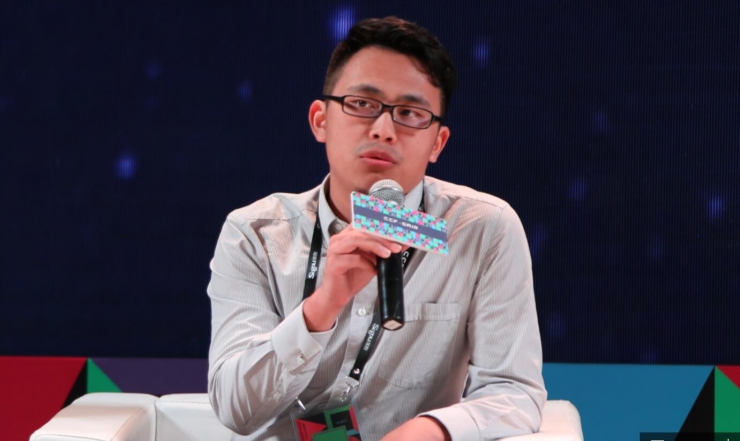MINIEYE has no disguise. What they want to do is domestic Mobileye, but the team only makes car visual recognition systems. The MINIEYE team returned from Singapore in April 13th to concentrate on visual perception of single purpose. Do a subtraction first, and make the single point the ultimate. This will be a good quality product. Liu Guoqing, CEO of MINIEYE, told Lei Fengwang (search for "Lei Feng Net" public concern) that in order to collect the domestic complex traffic environment, 33 vehicles were collected one by one across the country's various roads, snow, rain and fog from north to south. Such conditions are taken into account, and the perception effects of various cameras in different environments are well known. He said that visual sensing must achieve a very high standard.

"The reason why Mobileye does it well is because the entire R&D team is visually oriented, not the people in the auto industry." Liu Guoqing said, "So this part needs to be a very solid and international team." MINIEYE's team returned from the United States, Singapore, France, and Japan, so the international team needed this concentration to get things done.
Mobileye was established in 1999 and signed the first production agreement in 2007. It has no revenue for eight years. At the time, general-purpose chips couldn't support such a large computing environment. They had to couple algorithms and hardware together to get the product tested. R & D strength is very important for the ability to do a good job of technology, focus and adhere to more important factors. This reminds reporters of Buffett's words: "The most important thing in a person's life is concentration."
Standing on the shoulders of giants to challenge giants MINIEYE's creation team 6 individuals from the Singapore government to do a project group ADAS, these doctoral students doing theoretical research at the school is very much hope that the things written in the paper into real products, and this product can give family and friends It is their earliest simple thought. In September 2014, MINIEYE received a 10 million investment from Alibaba partner Wu Yongming. In April of this year, he received another 30 million financing led by ZTE.
Whether it is a hardware or an algorithm, it is not a concept to do it now and the environment of the 1990s. Now that the computing power of the chip is very strong, the algorithm has matured after more than a decade of industry development. These two reasons gave MINIEYE a chance to overtake the curve in three years. In addition, they are vertical to the Chinese scene, so at home, they have the opportunity to challenge Mobileye. Their competitiveness is reflected in:
Localization of visual perception technology
MINIEYE also considered localized road conditions in the design of the algorithm.
In the collection and accumulation of data, large-scale collections nationwide began in September 2014.
A complete set of data processing mechanisms to make full use of massive data
Now they are trying to achieve the best level of vehicle and visual perception technology in the world, and to gradually bring mature modules to market.
Now that the warning system has been relatively mature, Liu Guoqing said that their front-loading products are ready for testing and joint R&D with OEMs (depots) and Tier One (tier-one suppliers). The support of resources is also beneficial to MINIEYE. The domestic technology in the monocular vision is indeed leading. The next step is to work together with a trusted supplier to push perception into control. The demo will come out in October.
Driverless implementation may be delayed later than expectedLiu Guoqing said: “I think the current capital market and media are looking too optimistic about this incident. I think this time will be a lot later than 2020, but it will not hinder the unmanned core technology in the process of unmanned Take it out to improve the driving experience, or improve safety.†He admitted that the current warning function is 100 times to save 99 times, or to save 50 times is good.
MINIEYE is not worried about latecomers in the Red Sea. Liu Guoqing believes that maybe the time to develop visual algorithms in the next five years can be reduced to one year, but you want to turn demos into products in addition to developing advanced algorithms, but also to engineer the algorithm. To achieve. There are a lot of special scenes and parameters to solve. These things cannot be solved. There is data accumulation, and data collection during the four seasons of spring, summer, autumn and winter cannot be skipped. Even pure warning products require time thresholds.
For now, visual sensors are used to help the vehicle to recognize the environment. Vehicle cameras can depict the appearance and shape of objects, read logos, etc. These functions cannot be achieved by other sensors. And positioned at a friendly price, it is the most recognized sensor in the market. It is easy to find that the core technology of autonomous driving is in the hands of technology companies rather than the hands of depots. MINIEYE does not want to take possession of resources. They work with depots and suppliers in an open mind. The rest of them do not participate much, because what they want to do is to achieve the ultimate in visual perception. Their R&D team is currently in Shenzhen and Nanjing. It is hoped that when ADAS is fully popular, core technologies such as visual perception and other sensors can be held in the hands of the Chinese people, and at the same time, products that best meet the driving environment of China can be created.
